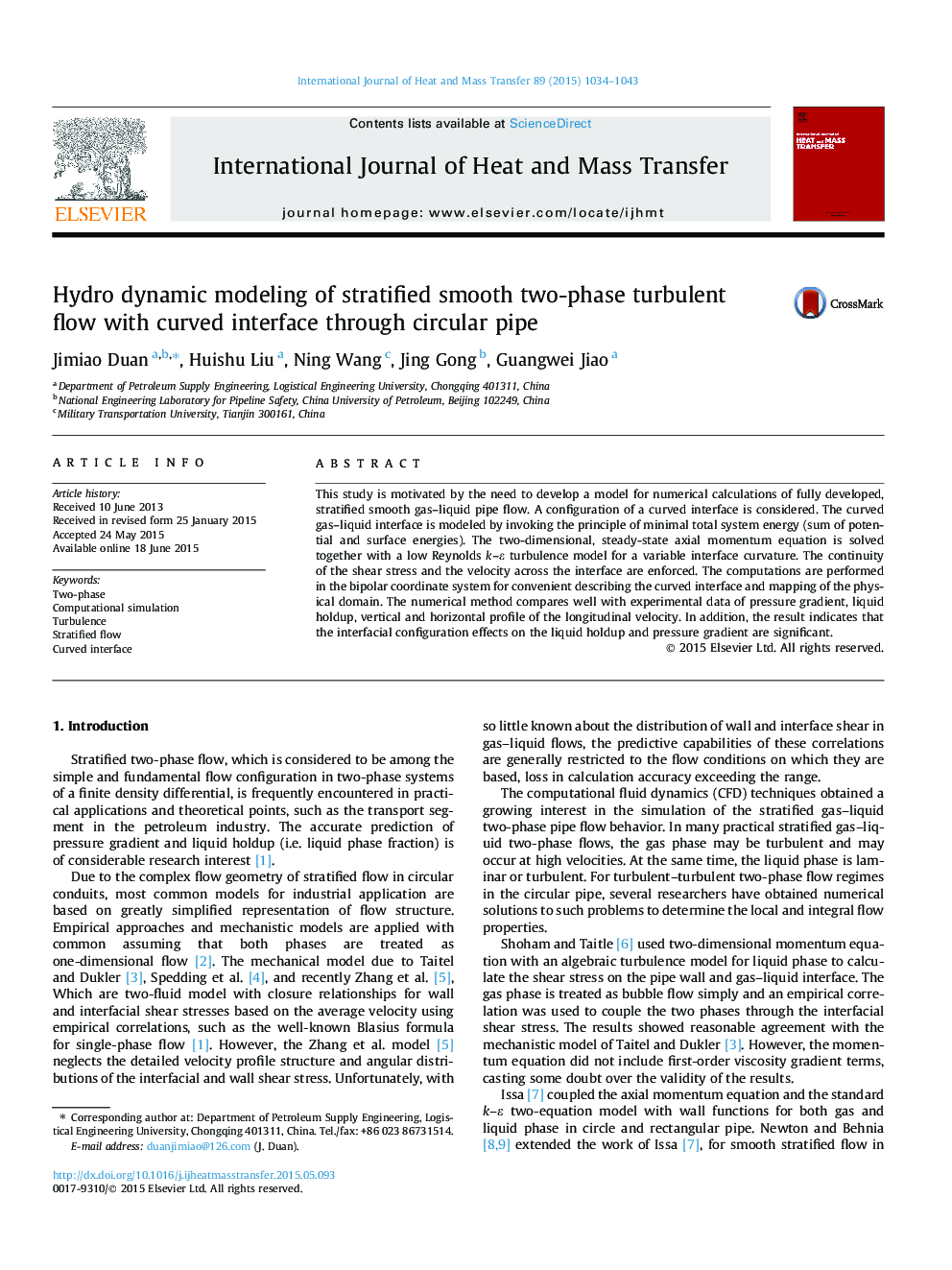| Article ID | Journal | Published Year | Pages | File Type |
|---|---|---|---|---|
| 7056636 | International Journal of Heat and Mass Transfer | 2015 | 10 Pages |
Abstract
This study is motivated by the need to develop a model for numerical calculations of fully developed, stratified smooth gas-liquid pipe flow. A configuration of a curved interface is considered. The curved gas-liquid interface is modeled by invoking the principle of minimal total system energy (sum of potential and surface energies). The two-dimensional, steady-state axial momentum equation is solved together with a low Reynolds k-ε turbulence model for a variable interface curvature. The continuity of the shear stress and the velocity across the interface are enforced. The computations are performed in the bipolar coordinate system for convenient describing the curved interface and mapping of the physical domain. The numerical method compares well with experimental data of pressure gradient, liquid holdup, vertical and horizontal profile of the longitudinal velocity. In addition, the result indicates that the interfacial configuration effects on the liquid holdup and pressure gradient are significant.
Related Topics
Physical Sciences and Engineering
Chemical Engineering
Fluid Flow and Transfer Processes
Authors
Jimiao Duan, Huishu Liu, Ning Wang, Jing Gong, Guangwei Jiao,
